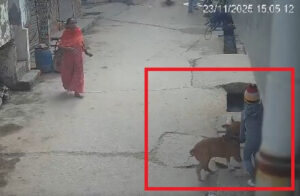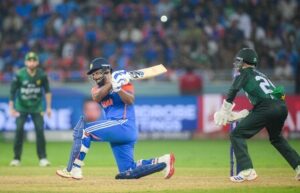CAG: NDA’s Rafale deal 2.86 per cent cheaper but acquisition system not effective

Photo : IANS
New Delhi : In a relief to the government ahead of Lok Sabha polls, the much-awaited Comptroller and Auditor General (CAG) has found that the deal signed by the NDA regime in 2016 for 36 fighter jets was 2.86 per cent lower than the price negotiated by the UPA for 126 aircraft but felt that the present capital acquisition system is unlikely to effectively support the IAF.
Without going into the controversial offset clause of the Medium Multi Role Combat Aircraft (MMRCA) deal, the report examined the pricing but did not disclose the actual price of the 36 Rafale fighter jets contracted by the NDA government. The prices have been redacted in the audit report based on the insistence of the Defence Ministry citing the Indo-French agreement of 2008 and the provisions of Inter-Government Agreement (IGA).
The Rafale deal is believed to be of the order of Rs 59,000 crore.
Against the backdrop of the Congress and other opposition parties attacking the government accusing it of corruption in the Rafale deal, the relief from the CAG comes on top of the Supreme Court clean cheat given last year.
“Overall, it may be seen that as against the Aligned Price as estimated by Audit of ‘CV’ million Euro, the contract was concluded for ‘U’ million Euro i.e. 2.86 per cent lower than the Audit Aligned Price,” the CAG said in its report on “Capital Acquisition on Indian Air Force” tabled in Parliament on Wednesday.
The report contained audit findings relating to the acquisition of MMCRA through an IGA with the government of France. “This includes examination of the pricing.”
Going into the methodology of the price comparison, the national auditor said the price offered by M/S Dassault Aviation in April 2008 against the Request For Proposal (RFP) of 2007 was a market discovered price and based on competitive bidding.
The price offer of 2007 had two distinct packages: pricing for 18 flyaway aircraft package and pricing for Transfer of Technology (ToT) package for 108 aircraft which were to be licensed produced in India.
The offer of 2015 on the other hand, the CAG said, was only for 36 flyaway fighter aircraft. The acquisition and price bids of 2007 and 2015 were very different as the latter included the price of ToT for license production of 108 aircraft in India which was 77.8 per cent of the total price bid of 2007.
In a comparative analysis of 2007 and 2015 price bids, the CAG said: “The Aligned Price worked out by INT was ‘U1’ million Euro while the Aligned Price as assessed by the audit was ‘CV’ million Euro which was about 1.23 per cent lower than the INT aligned cost.”
This was the price at which the 2015 contract should have been signed if the prices of 2007 and 2015 were considered at par. But as against this, the contract was signed in 2016 for ‘U’ million Euro which was 2.86 per cent lower than the Audit’s aligned price.
The difference between the Aligned Price estimated by INT and of Audit could be attributed to inconsistent price variation factors adopted by INT, alignment of the quantities/scope of the two offers and the difficulties of the alignment itself, the CAG report said.
The contract consisted of six different packages – Flyaway aircraft package, Maintenance Package, Indian Specific Enhancements, Weapons Package, Associated Services and Simulator Package. There were a total of 14 items under these six packages.
Item-wise analysis of prices showed that the contracted prices of seven items were higher than the aligned price, three were same and four were lower. Also the price of elements could not be compared because the structure/format of Dassault bid of 2007 and offer of 2015 were different, it said.
On Weapon Package, the CAG said after alignment of scope of the aligned price worked out to ‘WP1’ Million Euro and the contract price was ‘WP2’ Million Euro, a saving of 1.05 per cent.
On the Basic Aircraft package, the Defence Ministry contended that the aligned price worked out by INT and Audit in the case of basic aircraft was the same but argued that the negotiated price of 36 flyaway aircraft was 9 per cent lesser than the price offered for the aircraft in 2007.
However, the CAG said: “There is no difference between the bid of 2007 as escalated by INT with actual escalation factors, and the negotiated cost of the 2015 offer, for the same aircraft.”
The national auditor observed that overall the capital acquisition system, as it exists, is unlikely to effectively support the Indian Air Force (IAF) in its operational preparedness and modernization and called for revisiting the entire process of acquisition to simplify it.
It recommended that the IAF should improve its process of formation of Air Staff Qualitative Requirements (ASQR) to ensure that they correctly reflect the user’s functional parameters.
Audit is of the view that the present Lowest Price Technically Acceptable (LPTA) method of bid evaluation wherein the contract is awarded to the lowest priced offer which is technically acceptable needs reconsideration.
For procuring highly technical products, use of the Best Value method or a quantitative assessment method may ensure better value for money.
The CAG said Audit examined the system of capital acquisition of air assets to assess its ability to meet the required capability at the optimum price and the given time frame.
To acquire the right product at the right price, it is essential that the qualitative requirement truly reflects the user’s functional need; maximum possible competition is generated; and technical and price evaluation is done objectively.
Audit noted that the IAF did not define the ASQRs properly. As a result, none of the vendors could fully meet the ASQRs which were changed repeatedly during the procurement process.
“This created difficulties during technical and price evaluation and affected the integrity of competitive tendering which was also one of the major reasons for delays in acquisition process.
“The objectivity, the equality and consistency of the technical evaluation process was not evident in the Technical Evaluation Report,” the CAG said.
The national auditor also noted that the vendor response to solicitation of offers was low, which restricted competition. The number of vendors who responded to the Request for Proposal (RFP) was far less than the number of vendors who were invited to bid.
The CAG said the Defence Ministry should revisit the entire process of acquisition to weed out redundant activities and simply the process. The acquisition wing, headed by Director General (Acquisition), was envisaged as an integrated defence organisation.
“In reality, this has perhaps not happened, with bulk of the acquisition related activities still carried out in Services Headquarters,” the CAG said.
It said the Ministry faced difficulties in realistically estimating the benchmark price, making it difficult to establish the reasonability of price.
Before commencing negotiations, the INT estimated the benchmark price on a firm and fixed cost basis keeping in view the expected discounts, market study, Rafale sale price from annual reports of Dassault etc as ‘R’ Million Euro.
This was about 57 per cent lower than the initial offer of the French team and 46 per cent lower than the non-firm and fixed offer of ‘T’ Million Euro.
“Audit noted that as the INT was already aware of both the previous unrealistic benchmark pricing as well the commercial offer, they could have estimated the benchmark price more realistically. Audit also noted that in the process of procuring MMRCA, this was the second time (first time in November 2011) that an unrealistically low benchmark prices were fixed,” the report said.
The CAG also found that there was an improvement of one month in the delivery schedule of the 2016 contract for 36 Rafale fighter jets in flyaway condition than the one negotiated by the UPA government.
According to the original delivery schedule offered by Dassault in 2007, first 18 flyaway aircraft were to be delivered between 37 and 50 months of the signing of the contract. The next 18, which were to be license produced in HAL, were to be delivered from 49th to 72nd months of the signing of the contract.
During negotiations, INT conveyed to the French side that it expected the delivery of the first batch of 18 Rafale aircraft in 24 months after the signing of the Inter Government Agreement (IGA); and next batch of 18 aircraft in 36 months after the signing of the IGA.
However, the delivery schedule finally offered by the French side was 18 aircraft by 36 to 53 months after the signing of the IGA and the remaining 18 to be delivered by 67 months of the signing of IGA. This was better than the delivery schedule of 2007 by five months.
“However, Audit noted that as against the delivery period of 72 months in the earlier offer, the contracted delivery schedule for 36 Rafale aircraft was actually 71 months. The Indian Specific Enhancements (ISE) on the first aircraft would be completed by T0 plus 63 months and integration on the next 35 aircraft would be completed in eight months. Thus, there was an improvement of one month in the delivery schedule of the 2016 contract,” the CAG report said.
The CAG also found flaws in the Defence Ministry’s benchmark price estimates.
Published on: Feb 13, 2019 at 19:16 IST
IANS





